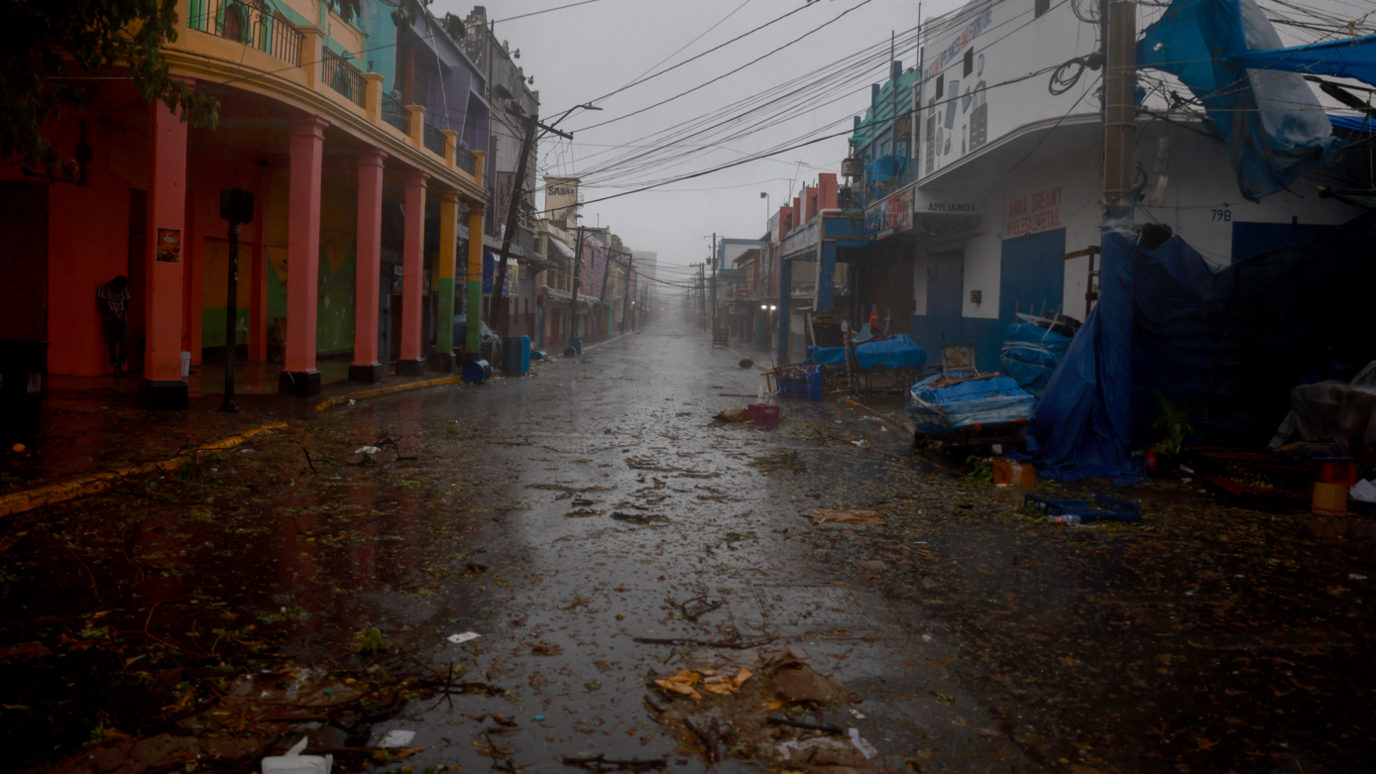Mexico's coast battered by Hurricane Beryl
Hurricane Beryl due to strengthen again after making landfall in Yucatan Peninsula
- Published
Hurricane Beryl has lashed Mexico's Yucatán Peninsula after wreaking havoc across the Caribbean, causing at least 10 deaths.
It made landfall as a category-two hurricane early on Friday, bringing winds of up to 175km/h (108mph).
It was later downgraded to a tropical storm, but is expected to re-intensify over the Gulf the Mexico at the weekend.
Beryl brought heavy rain to tourist hotspots of Cancún and Tulum. No major damage was reported but the high winds felled trees and caused power outages.

The high winds brought down trees and structures including billboards
Civil protection chief Laura Velazquez said power would be fully restored to those still without it by Sunday.
Tulum resident Carolina Vazquez was among those to be affected by the outages, speaking to the Reuters news agency as she queued at a soup kitchen organised by the Mexican army on Friday.
"In my little house a tree fell down, half of the house cracked, the roof tiles," she said.
Fernando Trevino, an employee at a local business, said: "We are evaluating, but so far it seems that everything is in order with the protections that were put in place, the preparations and so."
Ahead of Beryl's arrival, Schools were closed, hotel windows boarded up, and emergency shelters were set up in areas facing the brunt of the impact.
More than 8,000 troops from the army, air force and national guard were deployed in the Yucatán Peninsula to provide support.
Hundreds of tourists were evacuated from hotels, and more than 3,000 fled from Holbox Island off the coast, according to local authorities.
More than 300 flights were cancelled or delayed.

Several flights were cancelled or delayed due to the storm
On Thursday, many homes and businesses were badly damaged in the Cayman Islands, particularly along the coastline, where entire neighbourhoods were inundated.
Hurricane Beryl battered Jamaica on Wednesday after causing huge devastation across other Caribbean nations.
Hurricanes frequently occur near the peninsula, with the official storm season running from June to late November.
Where will Hurricane Beryl go next?
The storm is projected to travel over the Gulf of Mexico, moving towards north-eastern Mexico and southern Texas by the end of the weekend.
By the time it makes landfall again on Sunday evening, the storm is expected to have strengthened back to a hurricane.
Texas Governor Greg Abbott told people near the state's Gulf coast to "have an emergency plan to take care of yourself and your loved ones".
The US National Oceanic and Atmospheric Administration has warned that the North Atlantic could get as many as seven major hurricanes this year - up from an average of three in a season.

Related topics
- Published4 July 2024

- Published5 July 2024

- Published6 July 2024
